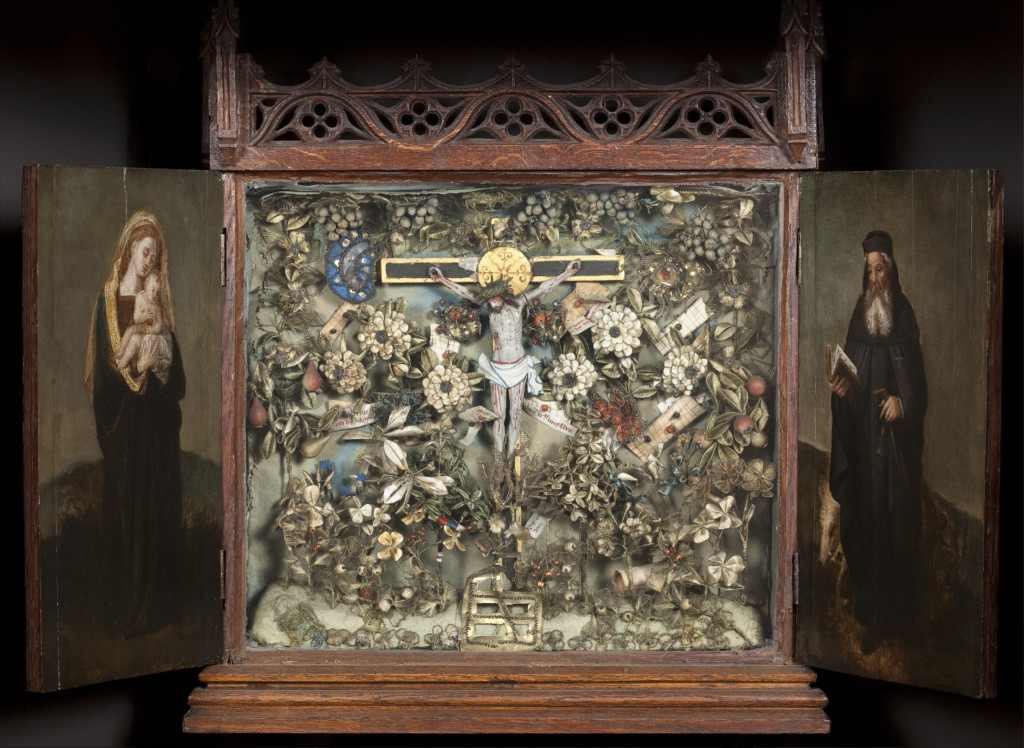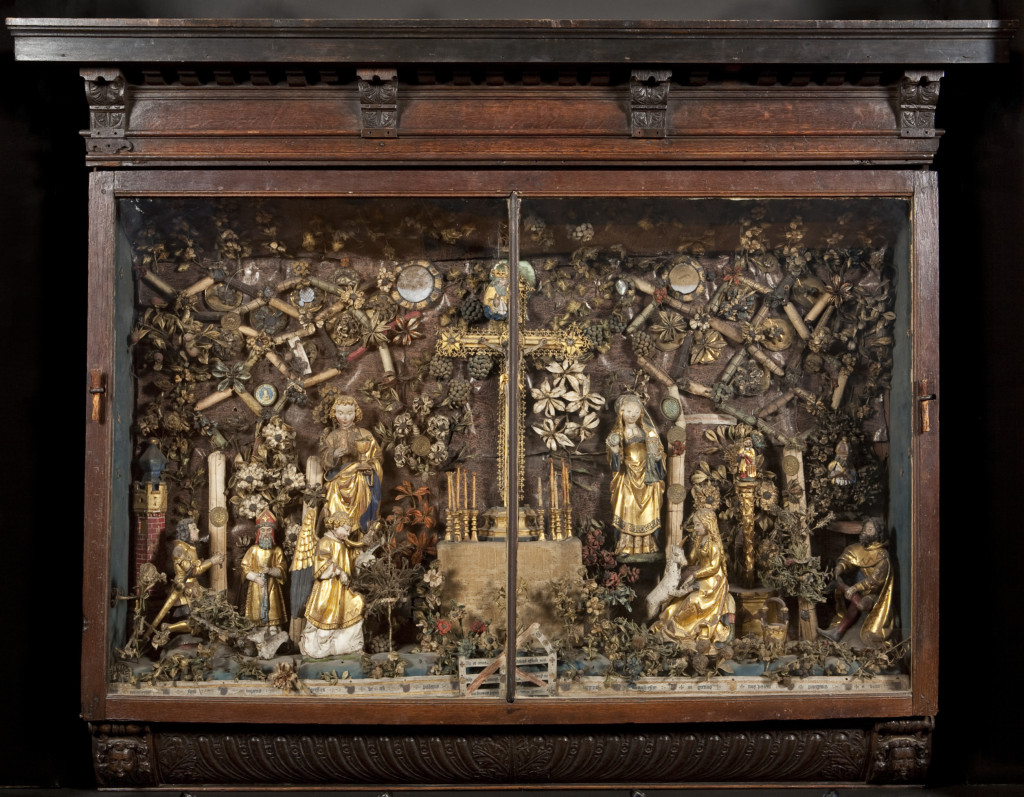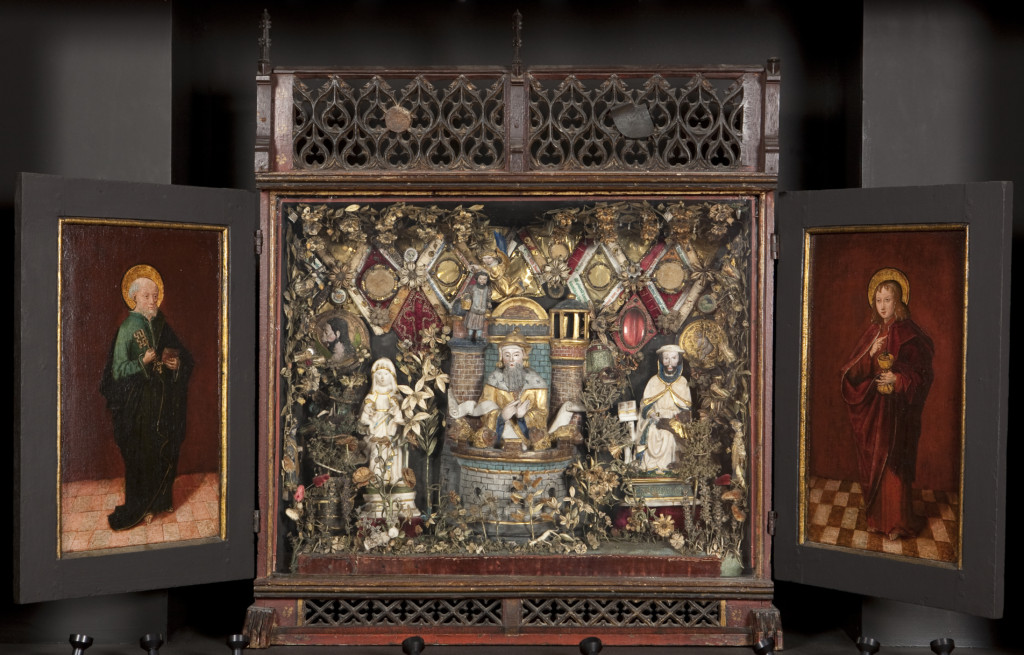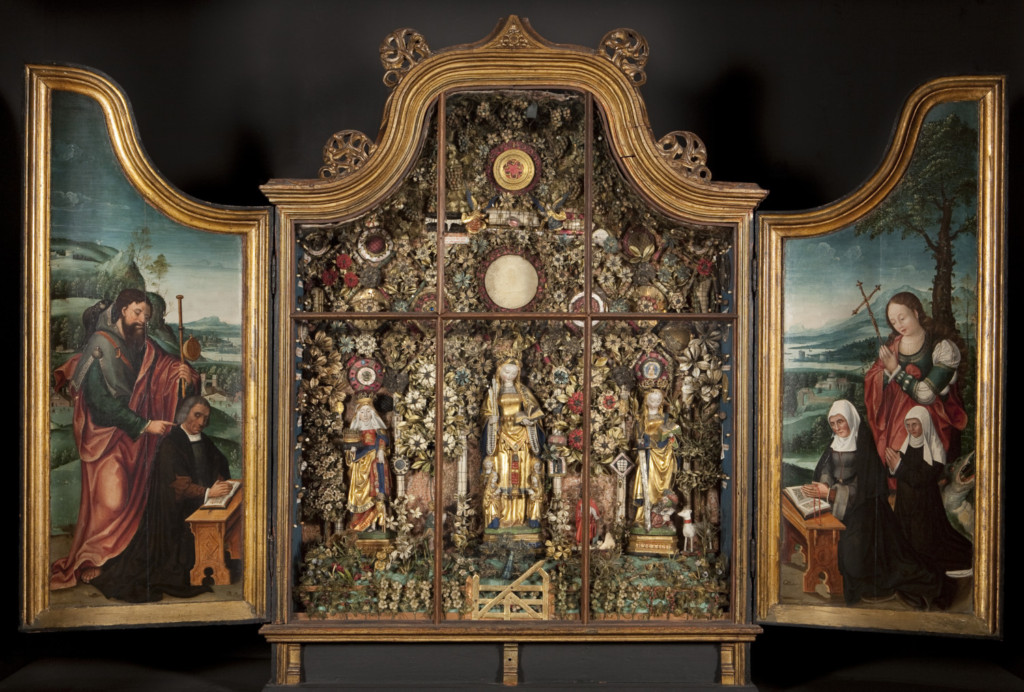Introduction
The ArtGarden research project tests and develops an efficient (“best practices”) matrix (tool – protocol) for monitoring, imaging and documenting (art-technical), fragile historic mixed media objects. This is used to facilitate decision making during conservation and preservation practice.
The casus in ArtGarden is the conservation and preservation of the unique collection of seven Enclosed Gardens from the Museum Hof van Busleyden. Their condition is similar to that of a vast number of museum objects kept in the Belgian Federal collections and even worldwide. Due to the mixed media nature of the Gardens this case study generates new know-how that can be applied to the conservation of other complex heritage objects. The aim is to develop ArtGarden as an international benchmarking project for conservation & preservation of original mixed media artefacts in museum environments.
Promotors of the research project are the Royal Institute for Cultural Heritage, KIK-IRPA, the University of Leuven – KU Leuven and the University of Antwerp, Axes.
ArtGarden step by step (2015 – 2020)
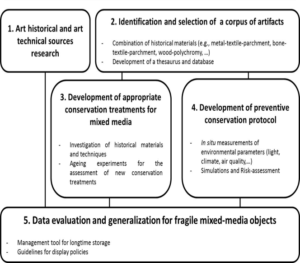
Firstly, the art historical and art technical sources of the Enclosed Gardens are explored, gathering information on the intangible context of these objects (Work Package 1).
Secondly, a corpus of artefacts inside the Enclosed Gardens are identified and selected in preparation of the third phase of the ArtGarden project. Due to the specific problems encountered by the mixed media in the Enclosed Gardens, focus lays on characteristic material combinations, e.g. metal-textile-parchment, bone-textile-parchment (relics), glass-textile, parchment-textile, wood-polychromy. A thesaurus and database is developed (Work Package 2).
Thirdly, to investigate the historical materials and techniques, scientific imaging (Infrared and Ultraviolet Reflectography, X-Radiography and Reflectance Transmission Imaging) is being used. A 3D imaging tool for small heritage objects (Microdome developed within the RICH project (Reflectance Imaging for Cultural Heritage)) is used. Furthermore, non-invasive analysis techniques and invasive analyses of micro samples are carried out (Work Package 3) as well as ageing experiments for the assessment of new conservation treatments.
Fourthly, a preventive conservation protocol is developed. It is crucial to keep these fragile mixed media treasures in optimal conditions during future display. Research and risk-assessment explore the evaluation matrix for the most appropriate parameters concerning environmental conditions: lighting, climate, vibrations, dust, display…(Work Package 4).
Finally, the data are evaluated in the perspective of museology, long-term storage and display policies for fragile mixed media objects. General guidelines are formulated and a management tool for the preservation of complex and extremely fragile mixed media heritage objects are developed (Work Package 5).
Guidelines for long-term preservation of historic mix media
The focus of the project is the guiding and evaluation of conservation treatment and the transportation, display in a museum environment and long-term storage of complex degraded historic mixed media artefacts. Up until now, guidelines have concentrated on one material characteristic. The complex nature of a large number of historic mixed-media artefacts in museum collections is more challenging and less developed. The ArtGarden project combines documentation, conservation and preservation protocols (Terminology defined by ICOM-CC, New Delhi, 2008) to create an innovative tool to support collection care, maintenance, display and valorization of complex historic collection artefacts.
Partners
Royal Institute for Cultural Heritage, KIK/IRPA
KU Leuven
University of Antwerp


